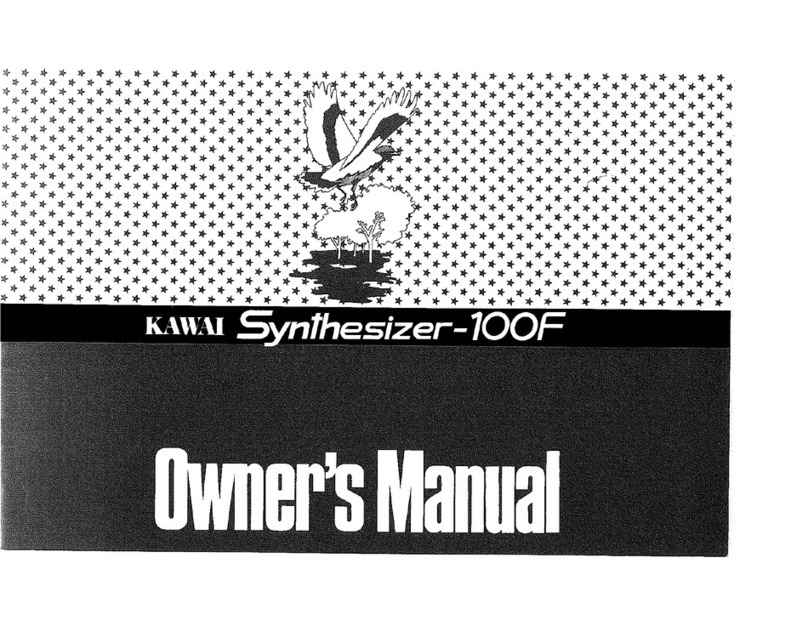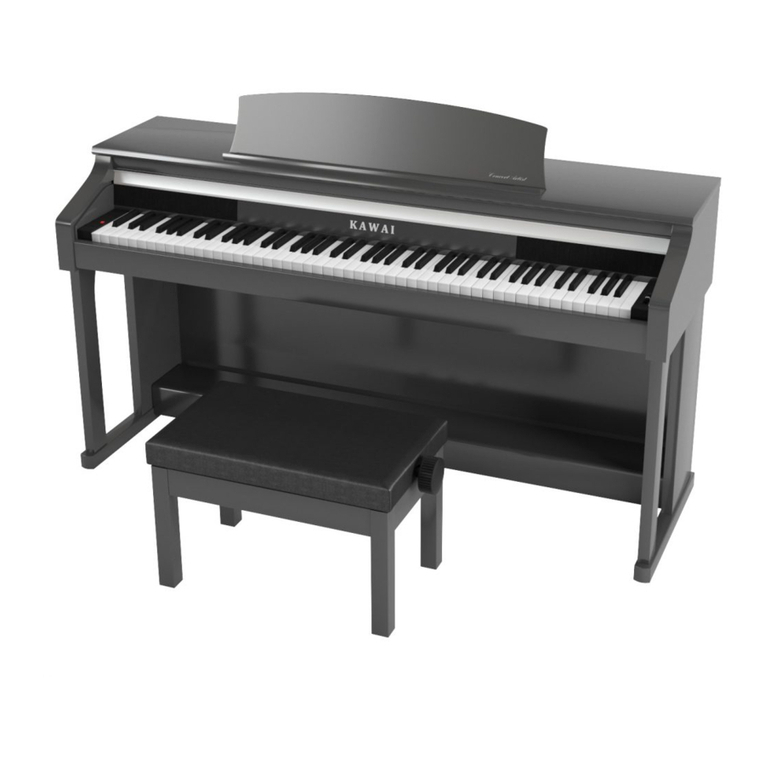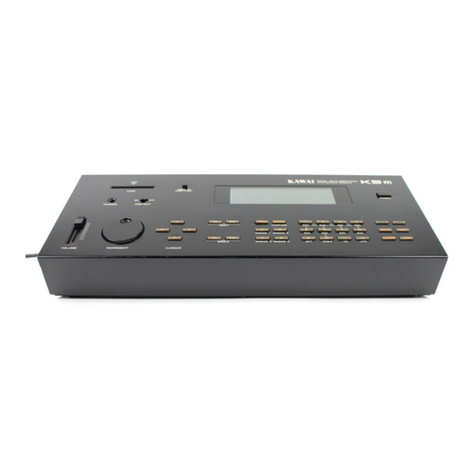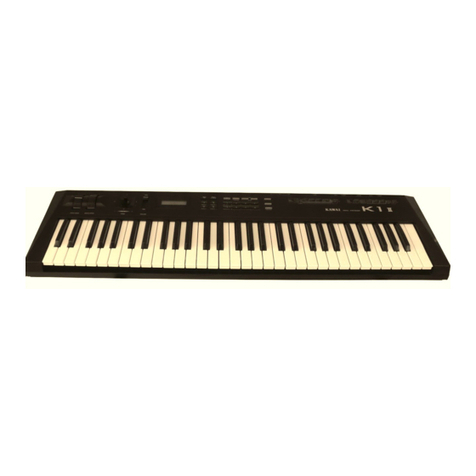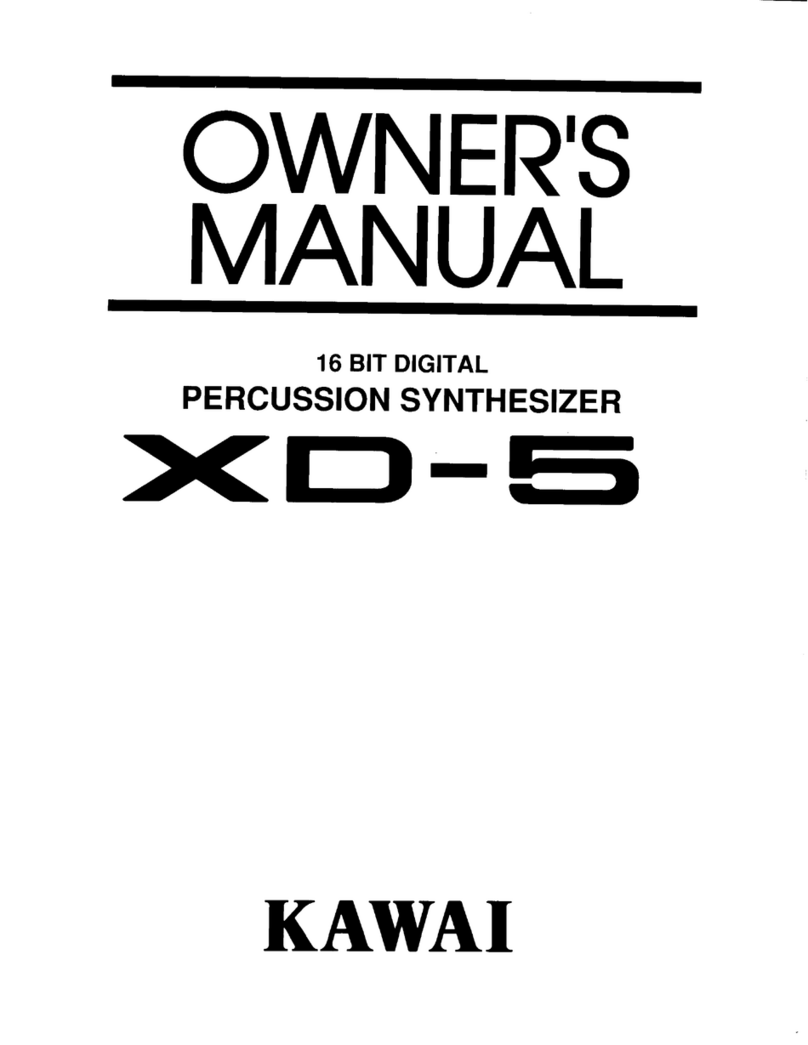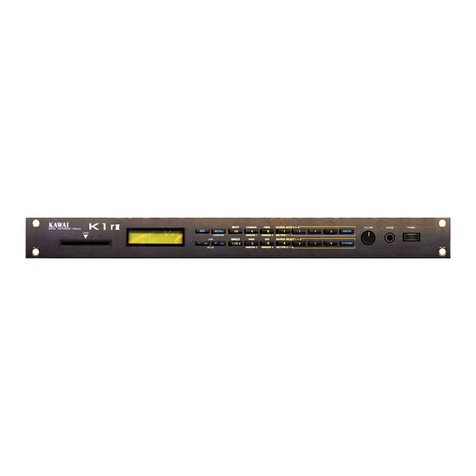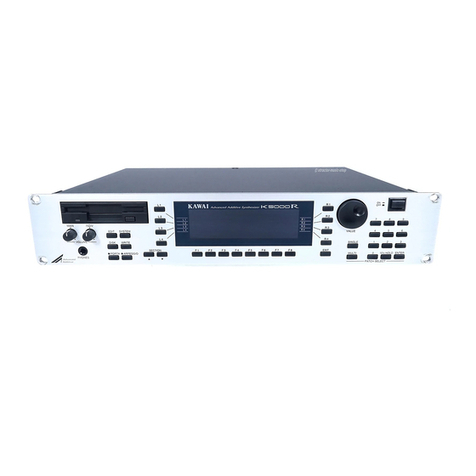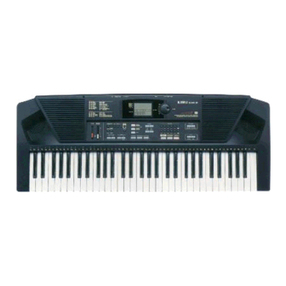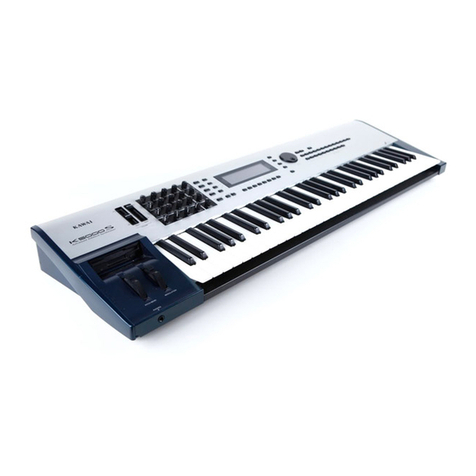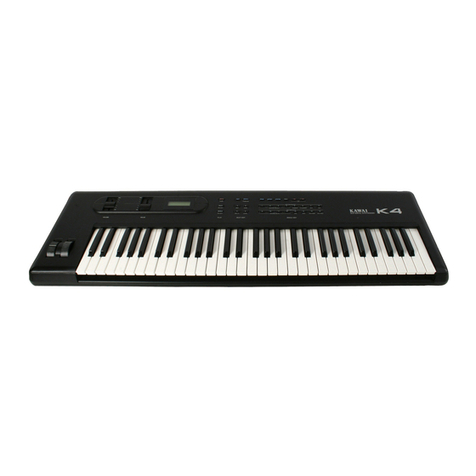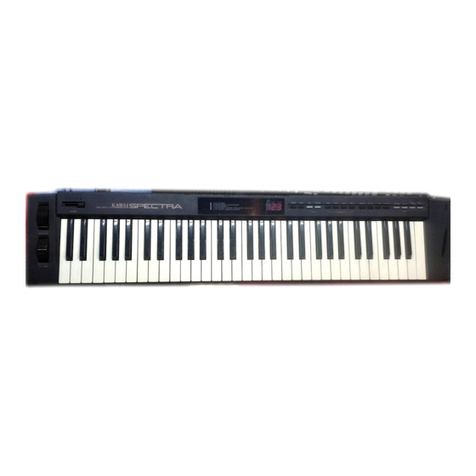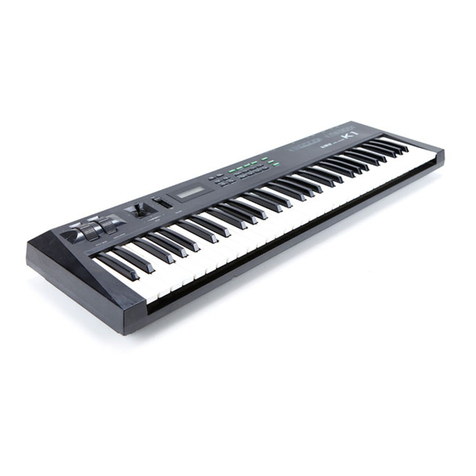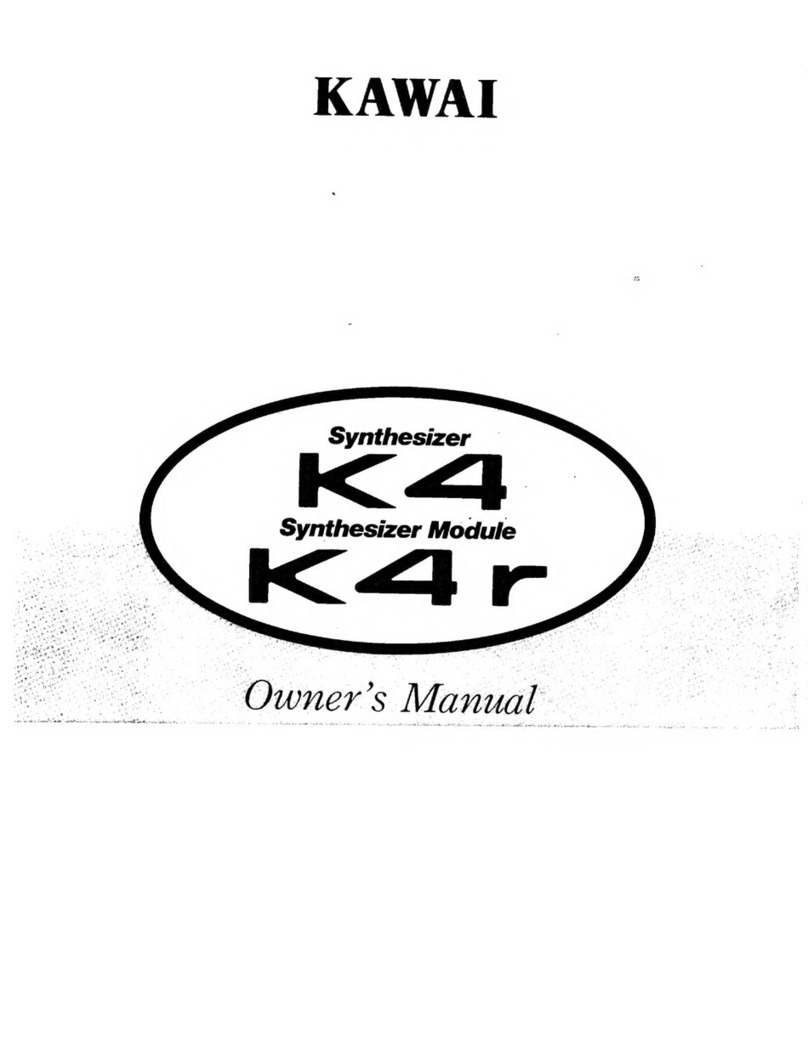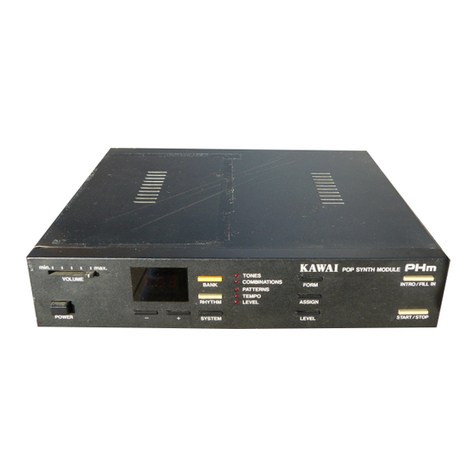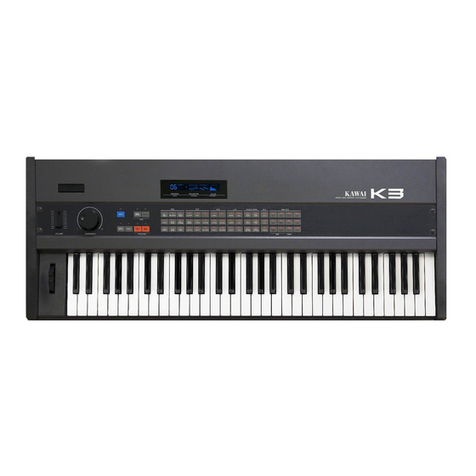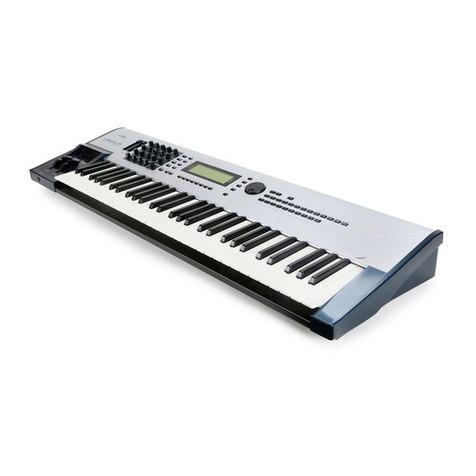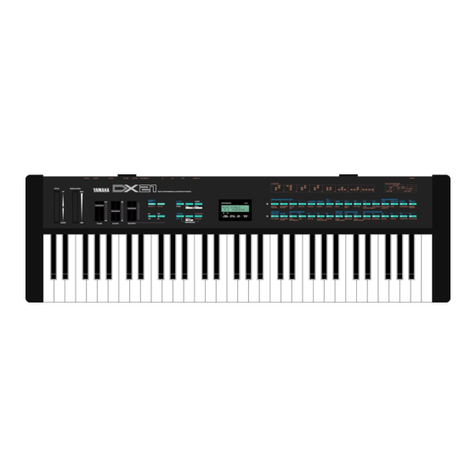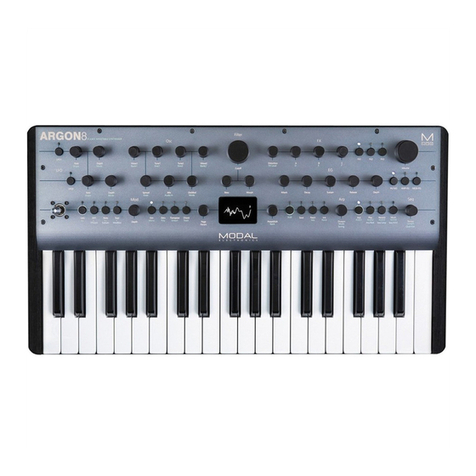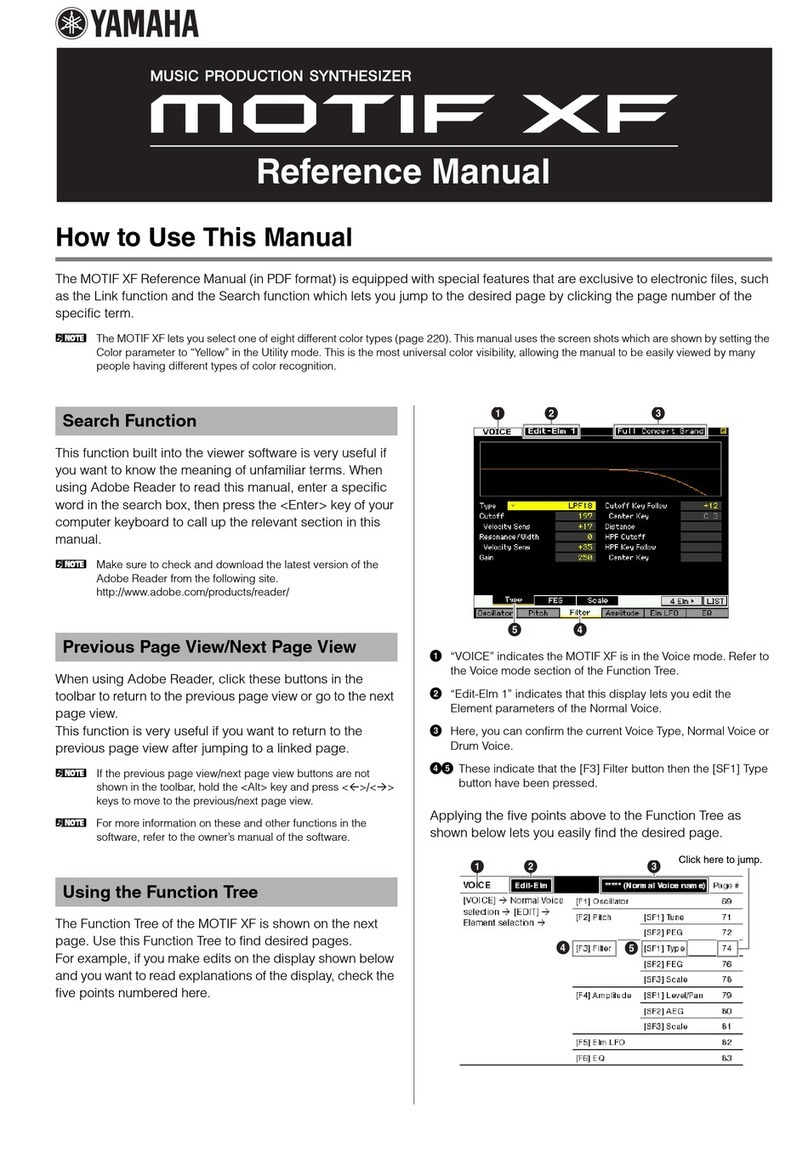b. Function of ENV II on VCA
Set all the controllers and selectors as shown in Fig. 4. Then switch the VCA Control Selector
(Fig. 14) to ENV II, and the Envelope Selector of the ENV li to ADR(/V). Under this
setting, while depressing akey, raise the Attack Controller to find the Attack Time becomes
longer. Then raise the Decay Controller to see the sound gradually becomes smaller and fades
away. When you release the key at halfway through, the sound begins to decay from that
point. As you raise the Decay Controller, the Decay Time becomes longer.
This ADR pattern can be used to create asound like aguitar or aharpsichord.
When the Envelope Selector is switched to ADLAJ, you will notice the volume of the sound
will be changed at its Attack and Decay by depressing- akey. On AD, the volume of the sound
rises as you depress akey then it decays. If you release the key at halfway through, the sound
wilt be cut off immediately. Therefore, this is useful to create asound like a piano. Switch the
Envelope Selector to AR (/\), and depress a key. Now the volume is kept at certain level
until it starts to decay by releasing the key. The effect that the sound decays after the key is
released is called "Sustain" on an electronic organ but it is called "Release" on asynthesizer.
This AR is used for producing acontinuous sound like an electronic organ or aviolin.
c. Function of ENV Ion VCF (Fig. 16)
On your 100F, the cut off frequency of the
VCF can be changed by the ENV I.
Set back all the controllers and the selectors as
Fig. 4, then set the Cutoff Controller of the
VCF (Fig. 11) at LEVEL 6.. As you raise the
ENV IController which controls the VCF, you
hear agradual rise of the cutoff frequency.
Now set the ENV IController to top (LEVEL
10), and switch the Envelope Selector of the
ENV Ito ADR (AJ. Then raise the Attack ENV I
Changing
Cutoff
frequency
Fig. 16
Controller and depress akey. The cutoff frequency rises gradually to the level which has been
set by the Controller of the ENV I, and immediately falls down to the original cutoff
frequency. If you lower the Decay Controller, the cutoff frequency falls down gradually.
Upon switching the Envelope Selector to AD</\J, you can change the cutoff frequency by
the Attack and Decay Controllers of the ENV I. This time, there is no change of the sound
after the key is released.
When you switch the Envelope Selector to AR(/\), cutoff frequency rises gradually then
keeps acertain level. When you release the key, the cutoff frequency falls down gradually. To
check this process, operate the VCA by the ENV II.
d. Function of Envelope Generator on
VCO (Fig. 17)
ENV I
VCO
Pitch Controller
ENV 1
.Pitch
Control
Selector
Fig. 17
On your 100F, the pitch of the sound can be
controlled by two Envelope Generators (ENV I
and ENV II).
If you set back all the controllers and the
selectors according to Fig. 4, and raise the Pitch
Controller of the VCO, the pitch will increase.
In this case, the Envelope Selector of the ENV
II is on AR (/\). Therefore, by raising the
Attack and Decay Controller and depressing a
key, the pitch rises gradually and keeps the
level which has been set by the Pitch Controller of the VCO. When you release the key, it
gradually falls back to the original pitch (zero level pitch of the VCO Pitch Controller). To
have the variation of the pitch during this Release Time, set the Control Selector of the VCA
to ENV ll.
By switching the Envelope Selector of the ENV II to ADR<.AJ, you can control the Attack,
Decay and Release Time which are the control signals (voltages! to the VCO, thus obtaining
the pitch variation.
By the ENV I., you can also control the pitch in the same way as by the ENV II. In this case,
switch the Pitch Control Selector of the VCO to ENV I.
